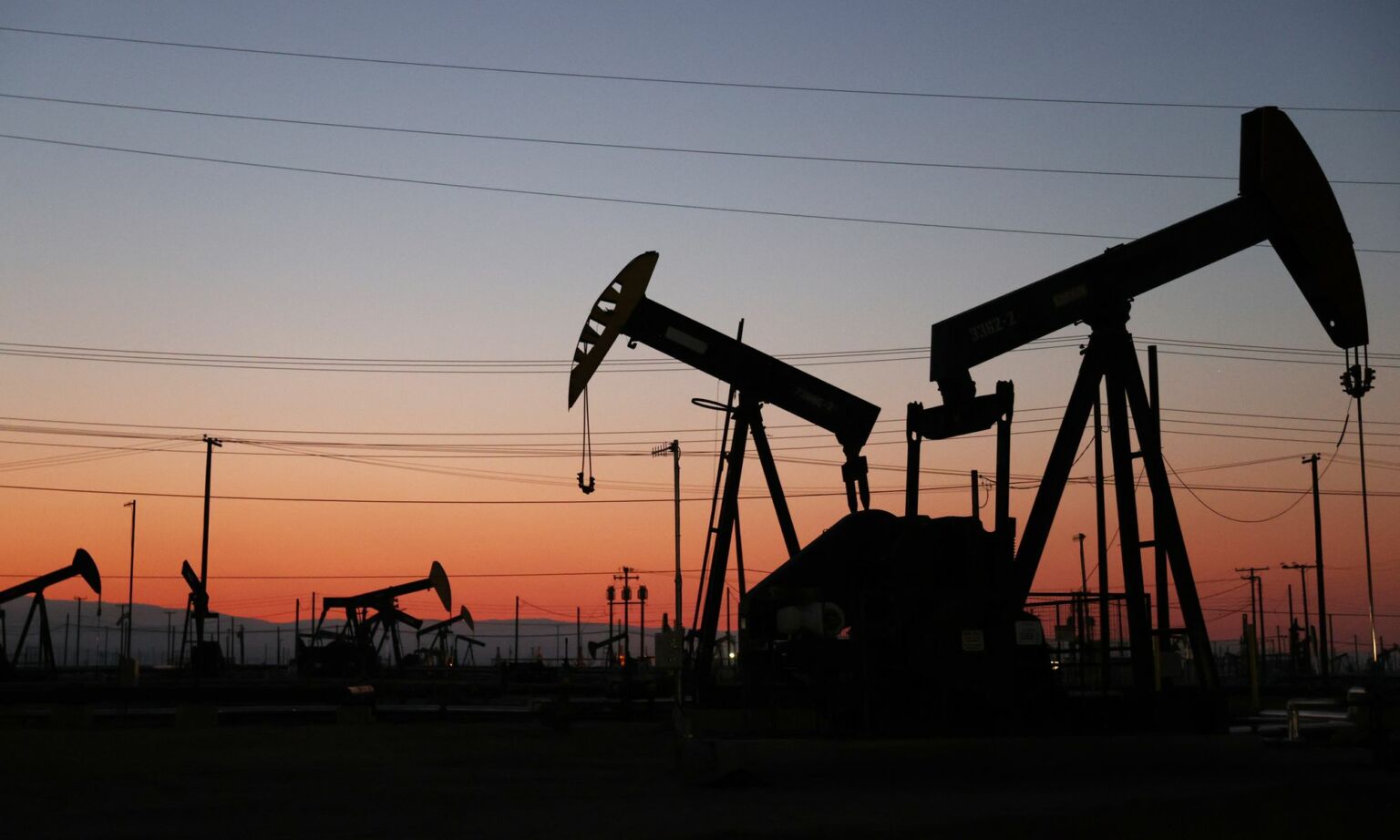
Long-read
The myth of America’s decline
As China struggles and the EU stagnates, the US continues to thrive – even despite its dreadful leaders.
Want to read spiked ad-free? Become a spiked supporter.
North America may suffer from some of the world’s poorest political leadership. Yet it seems destined to remain the wealthiest, most dominant place on Earth.
This may come as a surprise to many. After all, generations of pundits have insisted that the future will be forged elsewhere – Europe for some, Japan for others and, more recently, China. But none have the resources, the dynamic population and innovative acumen of North Americans.
Once taken for granted, China’s claim to the future is looking especially wobbly. In 2018, Chinese foreign ministry official Zhao Lijian described efforts to slow China’s dominion as being ‘as stupid as Don Quixote versus the windmills’. He added that ‘China’s win is unstoppable’. Today, China’s triumph looks far from inevitable. Projections that China could surpass the US in terms of aggregate economic output as soon as 2028 are being readjusted to 2036. Some now believe it won’t happen at all.
As for Japan or the EU, neither are likely to ever surpass the US. Each has experienced consistently slower growth. According to International Monetary Fund data, the eurozone economy grew about six per cent over the past 15 years, compared with growth of 82 per cent for the US during the same period. Europe’s once formidable industrial base has eroded in large part due to the ever rising burden of regulation. Germany’s economy, the most powerful economy in the EU, is barely the size of that of California.
Nothing better reflects the tectonic shift in global economic power than investment flows. Between 2012 and 2022, US inbound foreign investment swelled by nearly $100 billion in adjusted dollars, well above the level of investment into China. Levels of inbound investment into the EU and the UK have actually fallen during the same period.
Indeed, investment in China dropped from more than $300 billion in 2021 to a 30-year low of less than $50 billion in 2023. Other parts of Asia are headed West. Last year, Taiwan-based TSMC, the world’s leading semiconductor foundry, decided to build a $12 billion new plant in Arizona. Samsung, a huge Korean chipmaker, is also shopping for sites for a $17 billion plant in the US.
The US is also the world’s preeminent military power. Although somewhat degraded from its Reagan-era strength, and challenged increasingly by China’s expansion, the US military remains the dominant force on Earth. The US spends roughly 3.5 per cent of GDP in defence and has a military budget roughly five times that for the combined militaries of the UK, France and Germany. Despite some recent increases, most European countries fail to spend even two per cent of GDP on defence. They have, until now, depended largely on the US to keep the Ukrainian cause alive. In recent months, European countries have once again been asking the US to protect what are really their own critical shipping lanes in the Red Sea.
Why America leads the way
The resurgence of North America clearly does not stem from either the leadership of doddering US president Joe Biden, who seems barely in control of his own White House, or his rival, the clearly demented Donald Trump. Nor has Canada’s uber-woke prime minister, Justin Trudeau, been of any help. Rather, the key lies in three factors: natural resources, technological dominance and demographic vitality.
Overall, natural resources account for more than half of all Canada’s exports and roughly one-quarter of those of the US. Together the US and Canada produce roughly twice as much oil as either Russia or Saudi Arabia. Fossil fuels, the demon rum of the green catastrophists, are not going away, even in Europe. They still account for a vast majority of all global power generation, and the demand for fossil fuels will remain high for the foreseeable future.

Europe, meanwhile, seems to be tilting towards ‘energy suicide’, thanks to the green-fuelled rush to shut down nuclear reactors, natural-gas plants and coal power plants. This has driven energy prices to unprecedented highs. In contrast, the US has been greatly empowered by the growing demand for fossil fuels. It became the world’s largest exporter of liquified natural gas (LNG) last year. Indeed, its LNG exports are expected to almost double by 2030 on already approved projects. And around two-thirds of those exports go to Europe.
The divergence in energy prices between the US and Europe is accelerating Europe’s continued industrial decline. Even Germany, the last great bastion of European competence, is losing much of its industrial base, notably in chemicals and cars. Two-thirds of Germany’s industrial companies, notes Deloitte, have moved some or all of their operations abroad since the energy crisis began.
The contrast between the US and Germany is stark. Over the past 15 years, the US economy has expanded by 76 per cent to $25.5 trillion. During the same period, Germany’s economy grew by 19 per cent to $4.1 trillion. In dollar terms, the US added the equivalent of nearly three Germanys to its economy over that period. Germany, as Fraser Myers has noted on spiked, was once widely hailed as ‘the grown-up country’. It now seems subject to a form of infantile paralysis.
Food, the most basic of basic industries, represents another critical North American advantage. The US and Canada together boast the largest supply of arable land on the planet. Critically, the two countries also possess the second-largest freshwater reserves in the world, just behind Brazil. The US is already one of the world’s largest food producers. It is only likely to become larger in the future, with more and more of the world’s population dependent on North American grain, vegetables and cooking oil.
If it were just a question of resources, North America would be little more than a super-charged Saudi Arabia. But the US is also once again the world’s technological leader, after a severe challenge from Japan during the 1980s. Back then, we plugged into Japanese radios, televisions and video players. Today, the world listens and watches largely on American-designed products like iPhone and Android (Google) phones.
Today, of the top 10 tech firms by market capitalisation, eight were located in the US, one in Taiwan and one in the Netherlands. Over time, the only substantive threat to North American tech dominance comes from China, where firms are shielded from competition with the likes of Google, Amazon and Meta. These protected firms could pose a challenge in artificial intelligence. But America’s firms, venture capitalists and universities maintain an enormous lead in developing cutting edge AI.
Over time, China’s authoritarian structures will likely stunt its technological rise. The Chinese Communist Party’s assault on property rights and the rule of law is making foreign companies reconsider their tech investments. Japanese firms, including Sony and Nintendo, have already moved operations out of China, as part of an exodus of over 1,700 companies in the past year alone. SoftBank, the giant Japan-based venture-capital firm, has seen its revenues crater as its Chinese investments fell due to government clampdowns. It has now suspended future investments in China.
A demographic revival
Arguably the real ‘secret sauce’ of North American power lies in immigration. Of course, the recent surge in illegal migration at the southern border has brought many towns and cities to breaking point. But legal migration, on the other hand, has been a huge success story, enabling the US to attract some of the world’s brightest minds and best talent.
The US and Canada together have more foreign-born people than the next five countries combined. Migration has allowed the population to grow, if not rapidly, far more than any major European country. In fact, several European nations, like Italy, Germany, Poland, Russia and the Baltic states, are actually shrinking. China, Korea and Japan are all experiencing similar declines.
North America has proven more successful than other parts of the West at integrating immigrants, too. Europe, in contrast, is struggling to integrate even second-generation immigrants. Even before the outbreaks of pro-Hamas sentiment that have roiled cities like Paris, Europe has borne witness to increasing hostility towards the secular state.

The experience of Europe is certainly not going to prompt countries like Japan, Korea or China to allow for large infusions of immigrants. After the killing of George Floyd in 2020 and the subsequent Black Lives Matter protests, the Chinese foreign minister may have cheekily denounced ‘a systemic and persistent existence’ of repression of people of colour, but it’s not as if China embraces diversity. Instead, Beijing has forced the assimilation of non-Han residents – which is roughly six per cent of the population – most famously in Xinjiang but also in Tibet. Just 0.1 per cent of China’s population are immigrants, mainly from Africa. And they are not generally well treated.
American academics may talk up the existence of ‘systemic racism’, but North America is moving towards a post-racial society. New census numbers suggest that the majority of young Americans are from ethnic minorities. Acceptance of interracial marriage in the US is up by more than 20 percentage points since 2003. Indeed, today one in 10 babies born in the US has one white and one non-white parent. Similar trends can also be found in Canada, Australia and the UK.
Immigration – if managed intelligently – brings in new consumers and workers, and can act as a counter to looming demographic decline and global labour shortages. China knows these problems only too well. It is estimated that China’s workforce could drop roughly five per cent over the next decade. By 2050, China is expected to have 60million fewer under-15s, a loss approximately the size of Italy’s total population. The ratio of retirees to working people is expected to have more than tripled by then, which would be one of the most rapid demographic shifts in history. By 2050, China’s old-age-dependency ratio – defined as the number of individuals aged 65 and over per 100 people of working age, compared with those aged between 20 and 64 – will be roughly 20 per cent higher than that in the US.
President Xi may have promised his countrymen the prospect of global preeminence and the ‘Chinese dream’, but the number of Chinese immigrants to America has doubled since 2000, to 2.4million. In Canada, Chinese immigration has scaled new heights. Now standing at nearly two million, Canada’s Chinese population constitutes its second-largest immigrant group. Alongside other Asian immigrant groups, the Chinese have been critical to North America’s technological edge. Indeed, the CEOs of the top tech firms – Microsoft, Google, Nvidia – all hail from Asia. Almost three-quarters of the Silicon Valley tech workforce is foreign-born, mostly from East and South Asia.
Political weakness
If there’s an Achilles’ heel for North America, it certainly lies in its political leadership. In Canada, prime minister Justin Trudeau is even more disliked than the consistently unpopular President Biden is in the US. But national politics is not everything and in the North American expanse there’s still a great deal of power wielded by local and state authorities. In the US, states like Texas, Florida and Tennessee adopt policies that counter those proposed by the Biden administration. Similarly in Canada, oil-rich Alberta has rejected the Trudeau government’s renewable-energy fixation.
To an extent, America’s political dysfunction has its benefits, as no one policy agenda can survive constant changes in political leadership. Unlike China or the EU, there is no permanent bureaucracy or regime clearly in charge. Trump, for example, reversed many of Obama’s policies while Biden did the same to Trump. In 2025, those policies could be reversed again. In other words, anyone betting their financial futures on political winds can easily find their fortunes overturned.
Perhaps most important of all, North America is a big place, where geography allows for constant socio-economic shifts and changes. The US, Canada and Mexico are far less densely populated than Europe, China, Japan and India. People and industries are always shifting, first from the eastern seaboard to the west, and more recently to the southern tier. The south-east, including Texas, now has a larger economy than the north-east. In Canada, it’s Alberta that has been ascendant, while in Mexico, the wealthiest states are found not in the once dominant south but in the more Americanised north.
The big question, however, is whether North America will continue to pursue a global-leadership role. Self-sufficient in energy, food and technology, there’s no need to defend the ‘empire’ as the British did during their heyday, or the Japanese during their brief imperial era. The trend in North America now is not expansion abroad but greater integration of the US and its two largest trade partners, Canada and Mexico.
Moreover, economic nationalism, notes the left-leaning American Prospect, is now ‘mainstream’ in the US. Many Democrats pursue Trump’s MAGA themes, including legislation aimed at boosting US industrial production and a new emphasis on ‘buy American’ government-procurement programmes. There is growing support in both parties for something akin to industrial policy, as shown by the US Innovation and Competitiveness Act and the Inflation Reduction Act.
If Trump is elected, these isolationist trends are likely to get even stronger in the US. This is likely to be the case in Canada, too, if Conservative Pierre Poilievre takes power from globalist-oriented Trudeau. Andrés Manuel López Obrador, Mexico’s leftist president, is also an economic nationalist determined to control the country’s vast energy industry. In our new bifurcated world order, Mexico could replace China as the preferred manufacturing locale for large companies from Europe and Asia, as well as the US.
Given these trends, Europe and the east Asian allies need to think not about how to ‘Trump-proof’ their countries. No, they need to find incentives to keep North Americans in the game. In the struggle against the authoritarian states, only North America has the resources and heft to lead a democratic resistance.
Hating America may still be fashionable, particularly in Europe. But it is also fundamentally shortsighted, unless one wants to side with Putin’s Russia, the Chinese Communist Party, or the Islamist fanatics of the Middle East.
Joel Kotkin is a spiked columnist, the presidential fellow in urban futures at Chapman University and executive director of the Urban Reform Institute. His latest book, The Coming of Neo-Feudalism, is out now. Follow him on Twitter: @joelkotkin

Matt Ridley and Brendan O’Neill – live and in conversation
Thursday 21 March – 7pm to 8pm GMT
This is a free event, exclusively for spiked supporters.
Pictures by: Getty.
Who funds spiked? You do
We are funded by you. And in this era of cancel culture and advertiser boycotts, we rely on your donations more than ever. Seventy per cent of our revenue comes from our readers’ donations – the vast majority giving just £5 per month. If you make a regular donation – of £5 a month or £50 a year – you can become a and enjoy:
–Ad-free reading
–Exclusive events
–Access to our comments section
It’s the best way to keep spiked going – and growing. Thank you!







Comments
Want to join the conversation?
Only spiked supporters and patrons, who donate regularly to us, can comment on our articles.